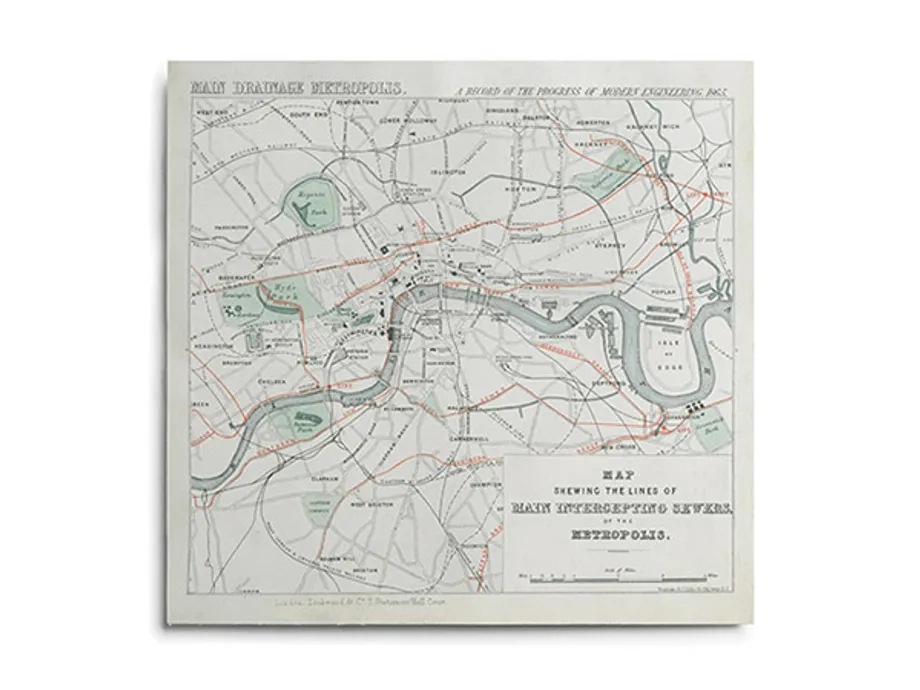Sewer systems
A sewer system designed to carry waste is known as a sanitary sewer (also called a foul sewer and a covered sewer). This is an underground carriage system designed specifically for transporting sewage from houses and commercial buildings through pipes to treatment or disposal.
Sewer systems designed to carry both waste and storm water are known as combined sewers. Open sewers, consisting of gutters and urban streambeds, were common worldwide before the 20th century.
In now-developed countries, large efforts were made during the late 19th and early 20th centuries to cover the formerly open sewers, converting them to closed systems.
1865 London sewers image
This 1865 map shows the main intercepting sewers in London. The London sewer system was created by Sir Joseph Bazalgette, Chief Engineer of London's Metropolitan Board of Works. The system was opened by Edward, Prince of Wales in 1865, although the whole project took another 10 years to complete.
The sewer network was created in response to the Great Stink of 1858 when the Thames was little more than an open sewer, without fish or wildlife. Bazalgette's solution was to create 82 miles of underground brick main sewers and 1,100 miles of street sewers to intercept the raw sewage.
Donated by The Institution of Civil Engineers

